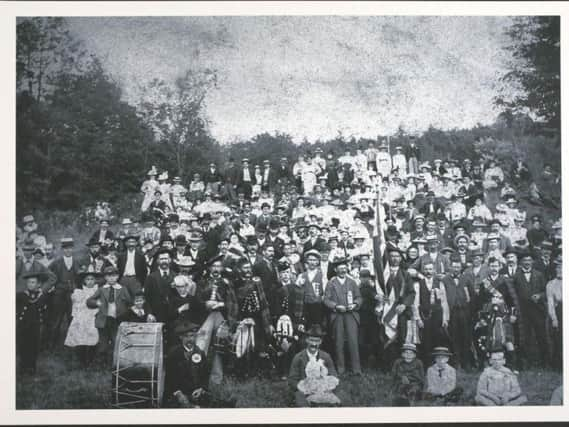How to trace your Scottish family tree - according to a professional genealogist


Tracking down your ancestors has never been easier, but knowing where to start can be daunting.
If in the right hands the reams of records available at our fingertips can be utilised to trace family lines back centuries.
Advertisement
Hide AdGraham Holton has been a tutor on the University of Strathclyde's Genealogical Studies since 2007 and knows better than most how to track down Scottish ancestors.
He has the following tips for those looking to step back in history.
Talk to relatives
Before jumping online, Holton recommends reaching out to living family relatives for tidbits of information on family history.
He says: If you've got the opportunity to talk to elder living relatives then do so.
"Gather any documentation if you can that is already in existence within the family, be it old photographs, certificates, etc."
Use ScotlandsPeople
There are several genealogy resources that can be employed by those tracing their family history, but Holton recommends ScotlandsPeople.
Advertisement
Hide Ad"Head online to ScotlandsPeople, which has access to digitised records in Edinburgh. The website has access to certificates for births, marriages and deaths and they go back to 1855 when civil registration started in Scotland."
Be wary of misspellings
Though ScotlandsPeople has access to all records, Holton suggests that amateur genealogists must be prepared for frustration due to historical mistakes.
Advertisement
Hide Ad"There can be problems with mistakes, the registrar might have misheard or misspelled a name due to a strong Scottish accent, a mistranscription of certain names, particularly Gaelic names. There can be a lot of inconsistencies."
Corroborate evidence
Once a potential ancestor has been tracked down, researchers mustn't simply prepare to jump back another generation. Make sure there is enough evidence to corroborate the find. According to Holton: "This might involve finding more documents which can corroborate this or disprove it."
Don't take fellow researchers' work as gospel
Fellow family historians' work can now be found online via websites such as Ancestry, but Holton warns not to blindly follow their findings.
"Some of them can be quite unreliable, they can range from the very unreliable to the very good.
"Very few of these are going to have references to what their sources were, but if they do that's a good thing to look out for. Try and ascertain if their tree is going to be reliable or not before using it.
"You can use it as a clue and follow it up."
Delve into criminal and land records
Though birth, death and marriage certificates will often be the first port of call for researchers, Holton recommends looking into poor house and poor relief records and land records to gather information on wealthy and less fortunate relatives alike.
Advertisement
Hide Ad"People of high social status who owned plots of land can be found in land records, while at the other end of the scale another category that can be quite well recorded is criminals who have been on the wrong side of the law. Records of people who were in asylums, or in poorhouses can also provide you with a wealth of information.
"These records don't tend to be online to the same extent, they tend to be held in local authority archives. For example, Glasgow City archives have a very well known database of their poor relief applications which is very large, there are hundreds of thousands of names in there.
Advertisement
Hide Ad"Their records are wonderful in providing a lot of information about these people."
Going back further
Before the introduction of birth, death and marriage certificates in 1855, parish records were the chief method of gathering data on the population.
Holton suggests that curious family members require an element of luck when delving beyond 1855.
"ScotlandsPeople also have the old parish registers. These are from before 1855. Some survive as far back as the 16th century, some don't start till the 19th century.
"It's quite patchy, but if you do have luck on your side you can trace back quite a lot further back. All Catholic registers and some other presbyterian church registers are also digitised and available on ScotlandsPeople."
Searching for blue blood
Holton jokes that he receives emails on a regular basis from people asking if they're related to Scottish royalty from Robert the Bruce to Mary Queen of Scots.
Advertisement
Hide AdBut with the rise of DNA testing, Holton claims that it is becoming easier to track down blue blooded relations.
"As we're discovering more about genetics, it can be possible to find if you're related to a gentry family.
Advertisement
Hide Ad"The Battle of Bannockburn project for example showed that people living today who could only trace back perhaps a couple of hundred years could actually by taking a DNA test discover that they were descended form someone who took part in the Battle of Bannockburn which happened 700 years ago.
"We don't have anything in between but we do know that they're descended from that historical individual. It could be a clue as well to eventually discovering a bit more documentation. We've now started running a Declaration of Arbroath project, which is looking at people mentioned in the declaration, who put their seals to it tracking down their families and performing further DNA testing."